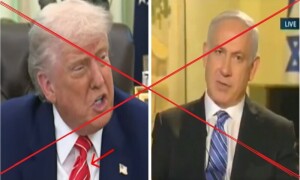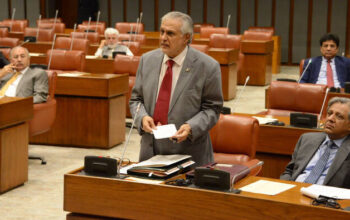By Staff Reporter
ISLAMABAD: Pakistan’s Rs 17.6 trillion budget for 2025-2026, rolled out by Finance Minister Mohammad Aurangzeb, is a high-wire act, slashing the deficit to 3.9% of GDP from 5.9% to win IMF applause, while tiptoeing around the political third rail of taxing the untaxed and sparking growth in an economy stuck in neutral. Revenue projections hit Rs 19.3 trillion, Rs 14.1 trillion from taxes, Rs 5.1 trillion from non-tax sources, a blueprint drenched in discipline. Yet, with unemployment at 6.3% (and a jaw-dropping 44.9% for youth), a 241.5 million population swollen by a youth bulge, and an informal economy mocking the tax net, this budget risks being a masterclass in caution rather than the bold stroke Pakistan desperately needs. Stability is the buzzword here, but it might just be a polite term for paralysis.
The revenue game is an old rerun: lean hard on the compliant, let the evaders slip. The Federal Board of Revenue (FBR) is saddled with a Herculean Rs 14.1 trillion target, leaning on sales taxes, income tax, and withholding measures. Digitization and e-tracking flex some muscle, bank account freezes and property seizures for non-filers, but it’s a blunt instrument. Where’s the carrot to lure the untaxed into the fold voluntarily?
Take the phased rollback of sales tax exemptions in FATA and PATA, creeping to 16% over four years. It’s a long-overdue fix for industries like tea and steel that have undercut fair competition with tax breaks. Economically, it’s sound, leveling the playing field could boost documented sectors. Politically, it’s a powder keg; tribal pushback and opposition Tahreek-e-Insaf government in the KPK could kneecap enforcement, exposing the government’s shaky grip. Then there’s the head-scratching tax grab on savings: profit from debt (bank savings, national certificates) spikes from 15% to 20%, with the Rs 5 million cap for individuals torched. Dividends jump to 25%, mutual funds take a 15% hit. In a country where the savings rate staggers at 12.8% of GDP, India’s is 30%, this slugs retirees, spooks savers, and shoves capital toward speculative havens like real estate and gold.
The real stunner? Retailers and wholesalers dodge the net entirely. The Tajeran Ittehad, a lobbying titan, walks free while the government hopes sales tax enforcement will indirectly snag them. It’s a dice roll, compliance might tick up, or resentment could flare in trading hubs like Faisalabad and Lahore, cities under Prime Minister Shehbaz Sharif’s niece’s rule. Miftah Ismail’s failed attempt to nab traders in tax net is still fresh in many minds. Though critics cry political spinelessness, defenders call it tactical pacing. Either way, the informal economy, retail and agriculture (23% of GDP, under 1% of tax revenue), yawns as a fiscal black hole.
This revenue plan is a lopsided squeeze, with one eye shut, brutal on the taxed, blind to the untaxed. Pakistan’s tax-to-GDP ratio limps at 9.5%, lagging India’s 11.7% and Turkey’s 17.5%. The FBR’s target looks ambitious but shaky without a wider net. Taxing savings is a misstep, capital-starved economies don’t thrive by punishing thrift. A balanced approach would pair enforcement with incentives, not just sticks. For now, it’s a short-term patch on a long-term wound.
Spending is where the budget flexes its fiscal restraint. Current expenditure dips to Rs 16.3 trillion from Rs 16.4 trillion, even with a 10% salary hike for federal workers and a 7% pension bump. The magic trick? A Rs 738 billion drop in mark-up payments, thanks to lower domestic interest rates, slashing debt servicing to Rs 8.2 trillion. Subsidies shrink to Rs 1.2 trillion from Rs 1.4 trillion, IMF fingerprints all over it. Provinces, typically fiscal black holes, deliver a Rs 1.5 trillion surplus, up 50% from last year’s Rs 1 trillion.
These savings fund small wins: little tax relief for salaried workers and nods to real estate lobbies. But privatization, the supposed cure for bleeding state-owned enterprises, limps at Rs 87 billion, peanuts against the scale of inefficiency. Corporate tax reform, critical for a sector that’s 18% of GDP but pays 60% of taxes, gets a token tweak with the super tax. Pension costs, up just 4% to Rs 1.055 trillion despite the 7% hike, hint at future liabilities left unaddressed.
The cuts are smart, debt servicing at 50% of revenue is a beast tamed for now. But this is a windfall-driven trim, not a structural fix. Pension reform lags, provincial surpluses are a one-time boost, and real estate perks prop up speculation over industry. Supporters laud the discipline; critics see a missed chance to redirect funds to growth engines. It’s prudent, yes, but transformative? Hardly.
Aurangzeb called this budget “bold,” but it’s more whisper than roar. Phased tariff cuts aim to shake up rent-seeking industries, and bans on non-filers buying big-ticket items (like cars over 850cc) signal intent. Yet the finance minister’s own confession, the FBR’s too weak to nail its targets, cuts the legs from under the hype. Focusing on leakages from the compliant while sparing agriculture and retail is a political dodge, not an economic play.
Agriculture, employing 40% of the workforce and driving 23% of GDP, contributes a measly 1% to taxes. Taxing it could pave roads and pack classrooms, but Chaudhris and Wadaras smirk at Aurangzeb. Retail, mostly informal, dodges direct levies too, widening the gap between documented and undocumented economies. Meanwhile, large-scale manufacturing shrinks, and exports stagnate without corporate tax relief or incentives.
GDP growth at 2.7% lags the 8% needed to soak up the youth flood. Tariff tweaks are fine, but dodging the untaxed giants and export lethargy keeps this tinkering, not transformation. Backers say it’s a base to build on; doubters call it a stall-out. The FBR’s capacity crisis needs surgery, not patches. Growth demands courage this budget lacks.
Pakistan’s labor market is a demographic powder keg. Unemployment hovers at 6.3%, but for youth (15-24), it’s 44.9%. Women fare worse, and a 71.8 million-strong workforce, the world’s sixth largest, grows by 2 million yearly. With 62.6 million youth in a 241.5 million population (set to hit 100 million by 2030), this “dividend” could fuel prosperity, or chaos. The budget barely nods at it.
Rural skills, gender gaps, and domestic jobs get zero traction. Sure, 0.8 million skilled workers jet overseas yearly, but domestic prospects rot. SMEs, labor-intensive exports, and vocational training—proven job creators elsewhere- see no push.
Unemployment is the budget’s glaring blind spot. India’s manufacturing FDI boom shows what’s possible; Pakistan’s export incentives pale in comparison. Yes remittances (from abroad) cushion the blow; but underemployed youth could spark unrest. No jobs strategy? That’s a fuse lit and burning.
The budget is engineered to pass the IMF’s $7 billion program review in September, lower deficits, trimmed fat, provincial discipline. Tariff reforms and FATA/PATA tax shifts are steps forward. But it balks at taxing the powerful and untouchables, easing corporate woes, or confronting unemployment head-on. Pakistan’s calm is a chance to leap; instead, this is a cautious shuffle.
It’s a budget of stability, not vision. Aurangzeb buys time, not traction. The upside? Fiscal metrics improve, IMF stays happy. The downside? Growth sputters, jobs vanish, and inequality festers. Pakistan needs a rewiring, politically toxic, yes, but economically vital. For now, this is a holding pattern, not a breakthrough.
Copyright © 2021 Independent Pakistan | All rights reserved




